Intel's Haswell Architecture Analyzed: Building a New PC and a New Intel
by Anand Lal Shimpi on October 5, 2012 2:45 AM ESTPlatform Retargeting
Since the introduction of Conroe/Merom back in 2006 Intel has been prioritizing notebooks for the majority of its processor designs. The TDP target for these architectures was set around 35 - 45W. Higher and lower TDPs were hit by binning and scaling voltage. The rule of thumb is a single architecture can efficiently cover an order of magnitude of TDPs. In the case of these architectures we saw them scale all the way up to 130W and all the way down to 17W.

In the middle of 2011 Intel announced its Ultrabook initiative, and at the same time mentioned that Haswell would shift Intel's notebook design target from 35 - 45W down to 10 - 20W.
At the time I didn't think too much about the new design target, but everything makes a lot more sense now. This isn't a "simple" architectural shift, it's a complete rethinking of how Intel approaches platform design. More importantly than Haswell's 10 - 20W design point, is the new expanded SoC design target. I'll get to the second part shortly.
Platform Power
There will be four client focused categories of Haswell, and I can only talk about three of them now. There are the standard voltage desktop parts, the mobile parts and the ultra-mobile parts: Haswell, Haswell M and Haswell U. There's a fourth category of Haswell that may happen but a lot is still up in the air on that line.
Of the three that Intel is talking about now, the first two (Haswell/Haswell M) don't do anything revolutionary on the platform power side. Intel is promising around a 20% reduction in platform power compared to Sandy Bridge, but not the order of magnitude improvement it promised at IDF. These platforms are still two-chip solutions with the SoC and a secondary IO chip similar to what we have today with Ivy Bridge + PCH.
It's the Haswell U/ULT parts that brings about the dramatic change. These will be a single chip solution, with part of the voltage regulation typically found on motherboards moved onto the chip's package instead. There will still be some VR components on the motherboard as far as I can tell, it's the specifics that are lacking at this point (which seems to be much of the theme of this year's IDF).
Seven years ago Intel first demonstrated working silicon with an on-chip North Bridge (now commonplace) and on-package CMOS voltage regulation:
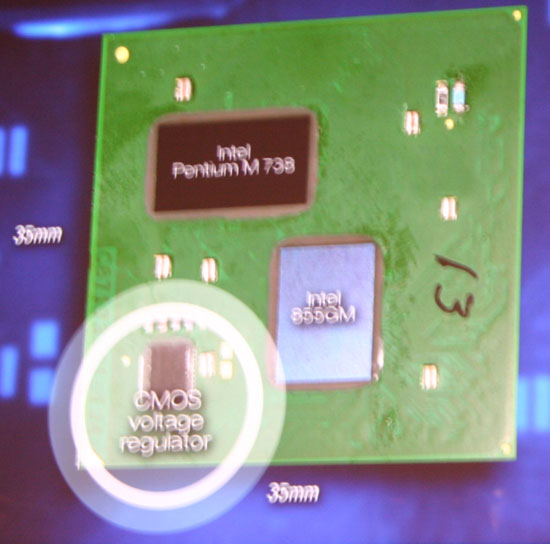
The benefits were two-fold: 1) Intel could manage fine grained voltage regulation with very fast transition times and 2) a tangible reduction in board component count.
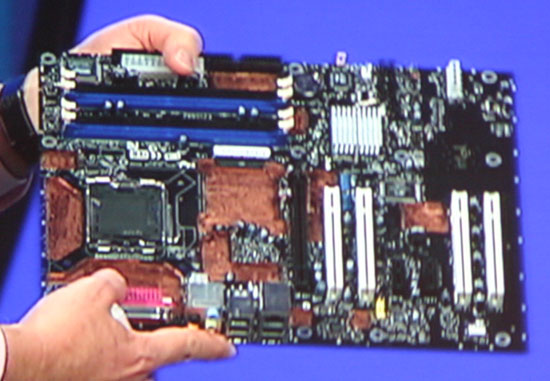
2005 - A prototype motherboard using the technology. Note the lack of voltage regulators on the motherboard and the missing GMCH (North Bridge) chip.
The second benefit is very easy to understand from a mobile perspective. Fewer components on a motherboard means smaller form factors and/or more room for other things (e.g. larger battery volume via a reduction in PCB size).
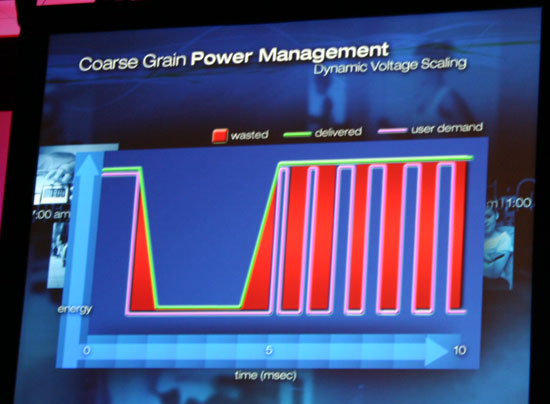

The first benefit made a lot of sense at the time when Intel introduced it, but it makes even more sense when you consider the most dramatic change to Haswell: support for S0ix active idle.


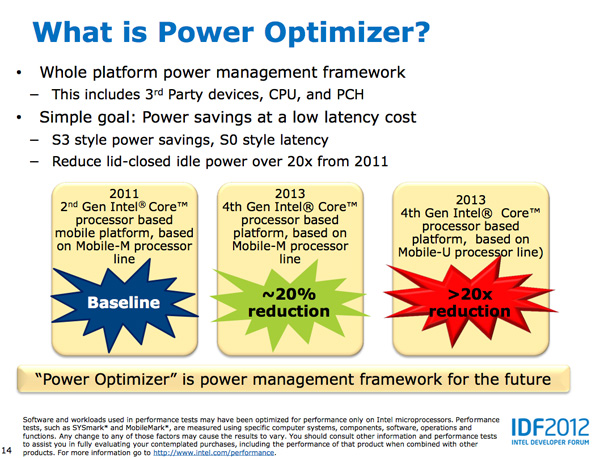
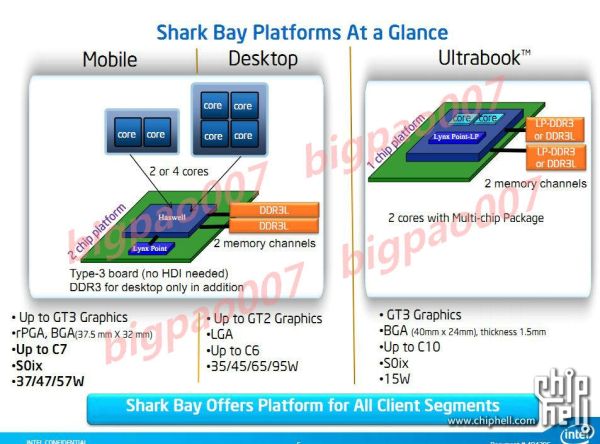








245 Comments
View All Comments
defiler99 - Tuesday, October 16, 2012 - link
One of the best articles on Anandtech in some time. This is great original tech industry reporting.Gc - Saturday, January 12, 2013 - link
Congratulations, an intel cpu engineer wrote around 27 Dec 2012:"... Anandtech's latest Haswell preview is also excellent; missing some key puzzle pieces to complete the picture and answer some open questions or correct some details but otherwise great. ..."
http://www.reddit.com/r/IAmA/comments/15iaet/iama_...
xaml - Thursday, May 23, 2013 - link
This was first posted here a few handfuls of pages back as a comment by user "telephone". ^^yhselp - Friday, March 29, 2013 - link
A few questions.Is there going to be a replacement (37W) for the current IVB 35W quad-core part? Quite a few designs are now dependable on this, lower power quad-core option - Sony S-series and Razer Blade, to name a few.
When can we expect all mobile CPUs (except maybe for the extreme series) to fall into the 10W-20W range? In three years' time and 10nm?
The decision to not include GT3 with desktop parts is very disappointing. A 35/45W low-voltage part with GT3 would make for an excellent HTPC build, among other things. Is there a chance Intel change their mind and start shipping GT3 desktop parts at some point?
JVimes - Tuesday, August 19, 2014 - link
Does EU stand for Execution Unit? That was surprisingly hard to google for.